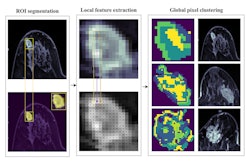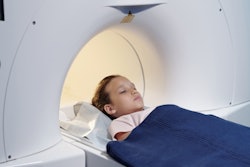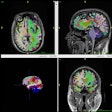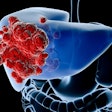Using a deep-learning model with multisequence MRI can enhance the performance of radiologists for diagnosing endometriosis, researchers have reported.
The study results could translate to better patient care, wrote a team led by Mana Moassefi, MD, of the Mayo Clinic in Rochester, MN. The group's findings were published April 15 in Abdominal Radiology.
"By applying [deep learning] to MR imaging, our study opens new avenues for enhancing diagnostic accuracy and efficiency in detecting endometriosis," the authors noted. "This approach not only supports radiologists by providing a powerful diagnostic tool but also holds promise for improving patient outcomes through earlier and more reliable detection."
Up to 10% of women of reproductive age are affected by endometriosis -- and the condition's symptoms can have a significant negative impact on a woman's life, the team explained. Yet despite the prevalence of the condition, diagnosing it can be tricky; in fact, delays in diagnosis can range from six to 10 years. To make matters worse, 50% of women with endometriosis experience infertility and 50% to 80% experience pelvic pain.
"In 2008, the annual healthcare costs for endometriosis in the U.S. were estimated to be approximately $4,000 per affected woman," the researchers wrote. "These costs are comparable to those associated with chronic diseases such as type 2 diabetes, rheumatoid arthritis, and Crohn's disease."
Endometriosis has been traditionally diagnosed via laparoscopy. But MRI has become a valuable tool for both diagnosis and presurgical planning, and using deep learning with the modality could further improve its efficacy, according to the investigators.
"The fibrosis, inflammatory damage, and iron deposition associated with endometriosis may manifest as specific imaging features that are difficult for the human eye to discern," they noted. "However, [convolutional neural networks], which analyze all pixel values and their correlations, could potentially capture these subtle features or localized lesions."
Moassefi and colleagues conducted a study that included 395 women with endometriosis that had been pathologically confirmed between 2015 and 2024. They also created an age-matched group of 356 individuals that underwent the same MRI protocol (that is, sagittal fat-saturated T1-weighted pre- and postcontrast and T2-weighted imaging) but were not diagnosed with the condition. Of the total study cohort, 12.5% were used for testing and validating the deep-learning algorithm (a 3D-DenseNet-121 classifier model). Seven abdominal radiologists experienced in endometriosis MR imaging and surgical planning and one women's imaging fellow with specific training in endometriosis MRI reviewed a selection of images and recorded any endometriosis detection results.
The deep-learning algorithm "demonstrated robust performance," the authors wrote: the most accurate predictions of endometriosis were achieved using T2-weighted and sagittal fat-saturated T1-weighted pre- and postcontrast images.
The algorithm outperformed the radiologist readers in sensitivity and specificity and demonstrated high F1 and area under the receiver operating curve (AUC) scores, they reported.
| Comparison of radiologist readers to deep-learning algorithm for endometriosis identification | ||
|---|---|---|
| Measure | Radiologist readers (without AI assistance) | Deep-learning algorithm (using an ensemble technique) |
| Sensitivity | 84.5% | 98% |
| Specificity | 69.6% | 72% |
| F1 score (the average of precision and recall, with 1 as reference) | -- | 0.88 |
| AUC (with 1 as reference) | -- | 0.91 |
When the radiologist readers used AI to identify endometriosis on MR imaging, their sensitivity improved slightly, from 84.5% to 87.9% -- a result that "[highlights the algorithm's potential] to enhance clinical detection of endometriosis while reducing reading time," the researchers wrote.
"Deep-learning models leveraging multisequence MRI significantly enhance endometriosis detection accuracy, surpassing traditional methods and improving radiologists' performance, marking an advance in imaging-based diagnostics," they concluded.
The complete study can be found here.


.fFmgij6Hin.png?auto=compress%2Cformat&fit=crop&h=100&q=70&w=100)





.fFmgij6Hin.png?auto=compress%2Cformat&fit=crop&h=167&q=70&w=250)











